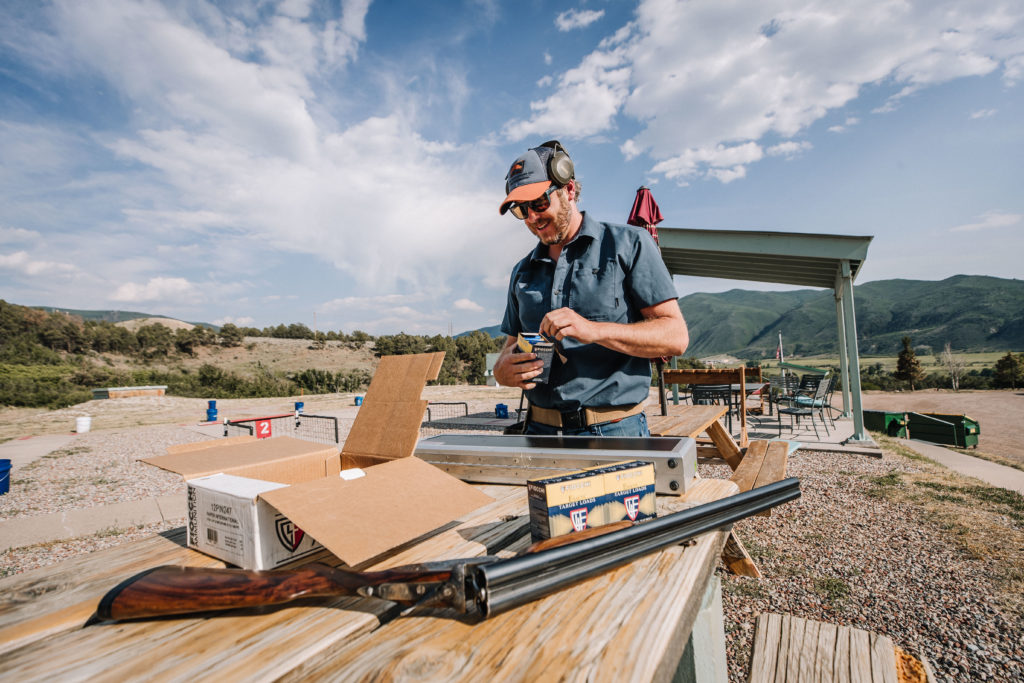
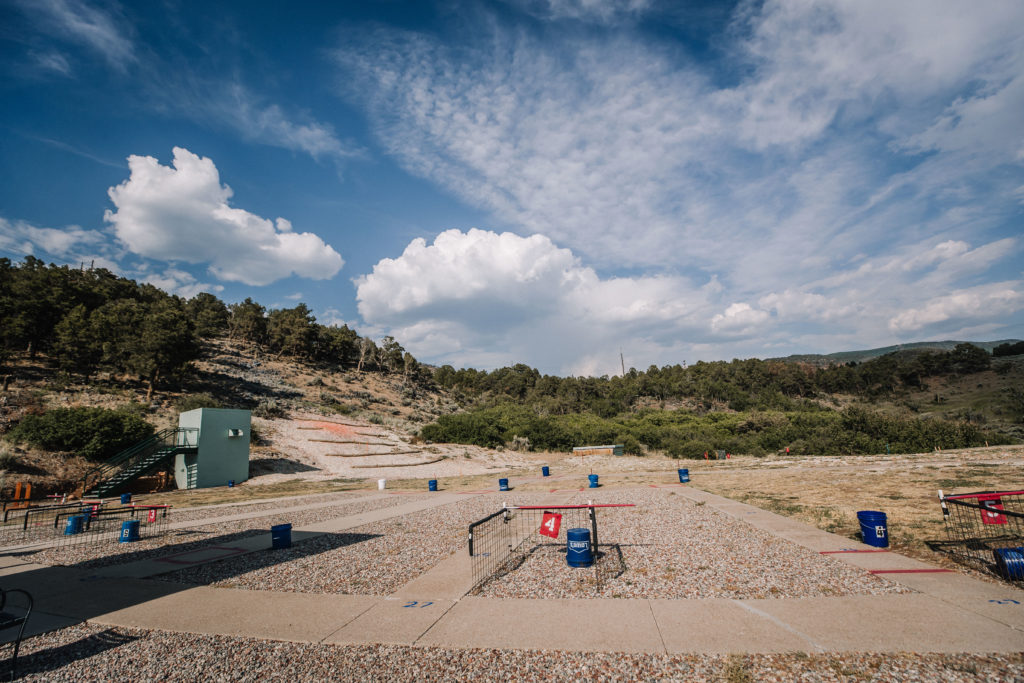
From the beginning, clay target shooting was designed to help hunters improve their wingshooting skills. But since its inception, the joy of breaking clays has spread across the world and grown into a sport in its own right. It is an accessible, year round activity for shooters of ALL ability levels (even first-timers!), and is one of our favorite activities to share with visitors to Aspen.
To give you a feel for what to expect on your outing, let’s review the basics of the different types of clay target shooting.
Trap
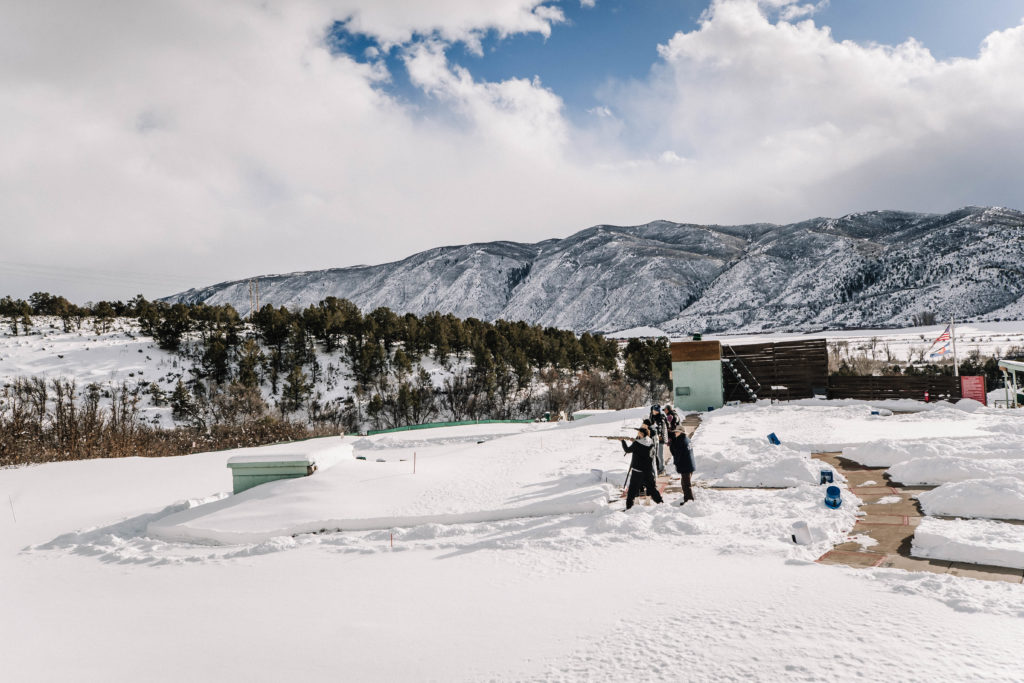
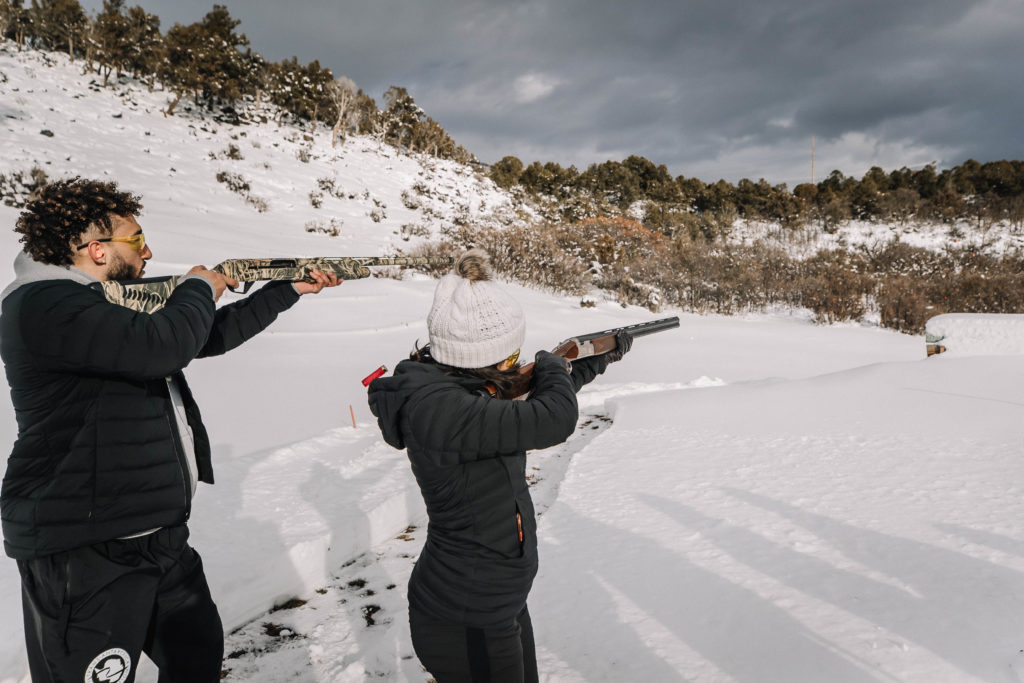
Trap is a wonderful tool for upland hunters because Pheasant, Chukar, Quail and most other game birds generally jump up from the ground and fly away from the hunter, making quick and accurate outgoing shots essential. In Trap, the shooter is positioned behind the Trap house that launches the clays away to imitate these flushing birds.
The shooter says “pull,” the target launches, and the shooter breaks the clay, simple right? Well, yes and no!
There are five stations on a standard Trap course that each present a slightly different angle on the outgoing shot. In some disciplines, a pair of clays or “double” is launched, requiring the shooter to break two targets in the air simultaneously! Additionally, the clay thrower can launch clays at various angles within a given radius, adding greater variability.
Down the Line Trap, Ball Trap, Double Trap and Olympic Trap all have slightly different rules, formats, clay angles and speeds. The variability present between different Trap disciplines and within each one is what makes the game of Trap so valuable to hunters, and so fun for recreational shooters as well! Trap forces you to adapt quickly and stay on your toes, but it isn’t the only clay target shooting game that we show to our guests…
Skeet
Though trap is an invaluable tool for practicing various outgoing shots, wild game birds in the field are unpredictable! Shooting Skeet in addition to Trap can help prepare you for a wider variety of real world target presentations. Like Trap, there are many disciplines within the sport like English Skeet, Olympic Skeet, and American Skeet, but generally they involve shooting from eight different stations positioned around a semicircle. The “high house” and “low house” that launch the clays are positioned on each end of the semi circle, and provide the shooter with a variety of incoming, outgoing and crossing shots as they move from one station to the next.
Clays launched from a high house (10 ft off the ground) and a low house (3 ½ feet off the ground) both rise to a height of 15 feet by the time they reach the center of the field. This presents the shooter with different flight paths in addition to a changing perspective from station to station. As a result, Skeet requires the shooter to consistently adjust hold points, leads and barrel swing.
These crossing, outgoing and incoming shots are great practice for dove, waterfowl, and upland hunting! They also put your shooting skills to the test against a more diverse set of scenarios. If you’re looking for a challenge, take advantage of both Trap and Skeet to diversify your repertoire! Practicing both games will make you a more well rounded shooter.
Though Trap and Skeet are different games, successful shooting in both relies on basic shotgunning fundamentals. Here are a few tips to help you on the range and in the field!

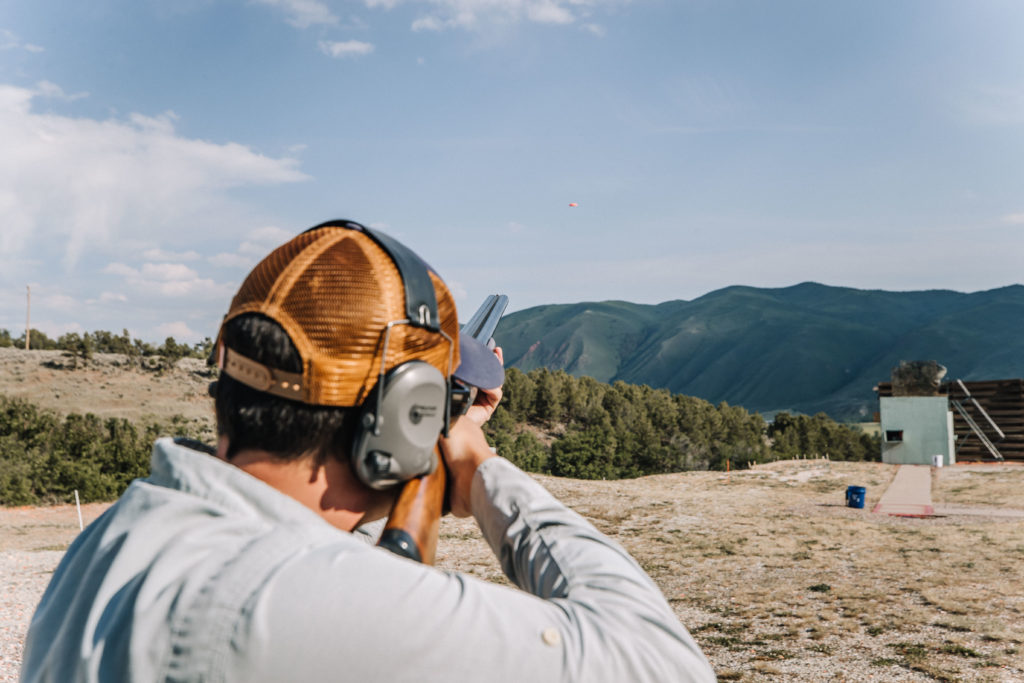
Safety
The first and most important thing is always safety. Shooting clay targets is a lot of fun! Keep it that way and always remember that you are operating a firearm. Before the clays start flying, make sure that all shooters are abiding by the same basic rules of firearm safety.
- Treat every gun as if it were loaded and always keep the gun pointed in a safe direction.
- Always keep your finger off of the trigger until you are ready to shoot.
- Always keep the gun unloaded until you’re ready to shoot.
Instructor Insights
Don’t “aim” the shotgun, point it.
- Many novice shotgunners have a tendency to try to aim the gun at the target. Though it’s true that you aim a rifle or a pistol, shooting a spray of pellets at a moving target from a shotgun is a whole different ball game! In order to break the target, we have to anticipate where the clay will be, lead it and pull the trigger all in a split second. This doesn’t leave much time to carefully line your sights up with the target, settle in and pull the trigger. Instead, we have to rely on practice and instinct to “point” the gun in the right direction.
- When we say “point the gun,” we mean: let your eyes guide your hands and barrel to the target, don’t try to line the gun up with the bird! It may take a little practice, but your gun will become an extension of yourself. It will serve you well in the long run.

Swing through the target!
- Pointing the gun will also allow you to swing through the bird. As you track the target through the air, make sure to lead the target, but don’t stop there! Follow through your target after the shot and keep that barrel moving when you pull the trigger!
Keep your nose over your toes
- Your center of mass should be slightly forward when shooting. Having your weight too far back is a common mistake for many shooters, and will greatly inhibit your ability to keep your balance while mounting your gun and swinging through the shot. If you can establish good body position while on the range, muscle memory will kick in in the field and help you make the most of your bird hunts.
Don’t just swing with your arms
- When you’re tracking the bird, pivot at the waist and let your torso swing with the target. This will allow you to stay solid, balanced and fluid while you follow through with your shot.
Try shooting with both eyes open
- Though some Trap and Skeet shooters shoot with one eye closed, many opt to keep both eyes open while shooting which allows for a greater field of vision when tracking the clay or bird. We know that everyone has their own method, but we find having both eyes open will especially benefit you in the field! If you don’t already shoot with both eyes open, give it a try!
Work on your Visual Hold
- Before you say “pull,” try to pick a point on the horizon ahead of where the clay will appear from the trap house but behind where you’ll break the clay.
- If you focus on the point where the clay is launched from, you won’t give yourself enough time to chase the clay and may never catch up to it. However, if you pick a point too far out from where the clay is launched, you won’t generate enough barrel speed to swing through the clay and lead it. Accordingly, you’ll likely shoot behind it. Most misses in the field and on the range come from shooting behind the bird.
- Though you won’t be able to anticipate exactly where and when a bird will flush, working on your visual hold on the range will help you establish good rhythm and timing in the field.
Shoot Confidently!
- Trap and Skeet are difficult things to master, and while we all have a lot we can work on, it’s important to shoot with confidence! Don’t be too hard on yourself if you aren’t shooting as well as you’d like to be. Remember the fundamentals, take a deep breath and have some fun!

The best way to improve is to practice, but practicing intentionally is even better. Focus on one of the basics from the list above the next time you’re out on the range. You’ll find that as you work to improve one area of your shooting, the others will get better too! As always, we’re here to help! If you want help breaking more clays and bagging more birds, give us a call and book an outing with one of our instructors — you’ll be impressed with how much fun you have, and how much you improve!
Written by Cian McGillicuddy, Photos by Anna Stonehouse

